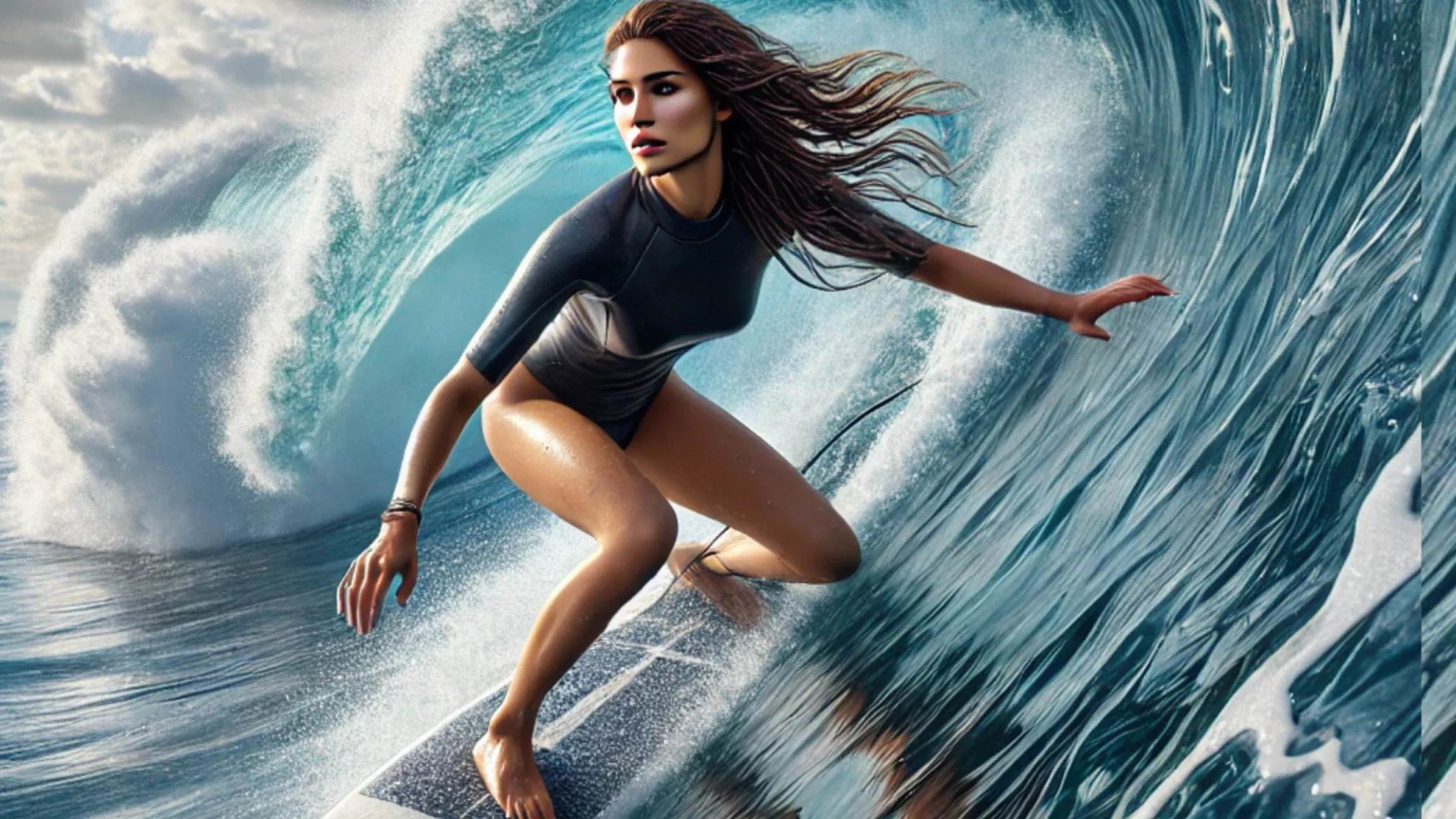Origin
The origins of surfing lie in Polynesia, particularly in Hawaii, where it was practised as a cultural practice and expression of status in society. European explorers and missionaries documented surfing as early as the 18th century. Today, it is a popular sport worldwide with various disciplines and competition formats.
Equipment
The most important piece of equipment for surfing is the surfboard. There are different types of surfboards, including
Shortboards (short, maneuverable, for fast and challenging waves)
Longboards (longer, more stable, easier to balance)
Funboards (mix of shortboard and longboard, ideal for beginners)
Bodyboards (smaller board for surfing lying down)
Stand-Up Paddle Boards (SUPs) (larger, with paddle for shallower waters)
Other important equipment includes:
Leash (safety leash that attaches the board to the surfer's foot)
Wetsuit (wetsuit, protects against cold and abrasions)
Surf wax (improves grip on the board)
Fins (especially for bodyboarding)
Techniques and basics
Surfing requires a combination of balance, strength, timing and wave awareness. The basic techniques are:
Paddling - The surfer moves forward with arm strokes to achieve the correct position in the wave.
Take-off - The transition from lying down to standing on the board.
Bottom Turn - A basic turn at the bottom of the wave to determine speed and direction.
Cutback - A change of direction back to the wave energy.
Floater - Gliding over the broken part of the wave.
Tube Riding - Surfing inside the hollow wave (the "tube"), one of the most spectacular maneuvers.
Waves and surfing conditions
Surfers need to be familiar with different sea conditions:
Wave types: Beach break (sandy bottom), reef break (reef as bottom), point break (waves breaking on a headland)
Wave height: Smaller waves for beginners, big waves for experienced surfers
Currents: Rip currents in particular can be dangerous
Tides: Influence on wave formation
Wind conditions: Offshore wind (from land to sea) creates clean waves
Competitive and recreational surfing
Surfing is practiced both as a recreational sport and professionally. The World Surf League (WSL) organizes the biggest international competitions, including the famous Big Wave Contests such as the "Eddie Aikau Invitational". The judging criteria for competitions include technique, difficulty, speed, control and creativity.
Risks and safety
Surfing involves risks such as:
Currents and undercurrents
Collisions with other surfers or rocks
Dangers from marine animals (e.g. jellyfish or sharks)
- . jellyfish or sharks)
Tiredness and hypothermia
In order to surf safely, you should:
Analyze currents and weather conditions
Do not surf alone
Wear protective clothing
Pay attention to your own ability
Conclusion
Surfing is a fascinating and challenging sport that promotes both physical fitness and mental relaxation. It combines the experience of nature, adventure and sporting ambition and is an integral part of the culture in many coastal regions. If you familiarize yourself with the basics, the technique and the safety rules, you can enjoy surfing to the full.
Surfing-Clubs
Show allFind sports clubs of the sport Surfing in your area, become a member and organize yourself in your club.
Surfing-News and Article
Show allDiscover exciting news and blog articles of the sport Surfing.

